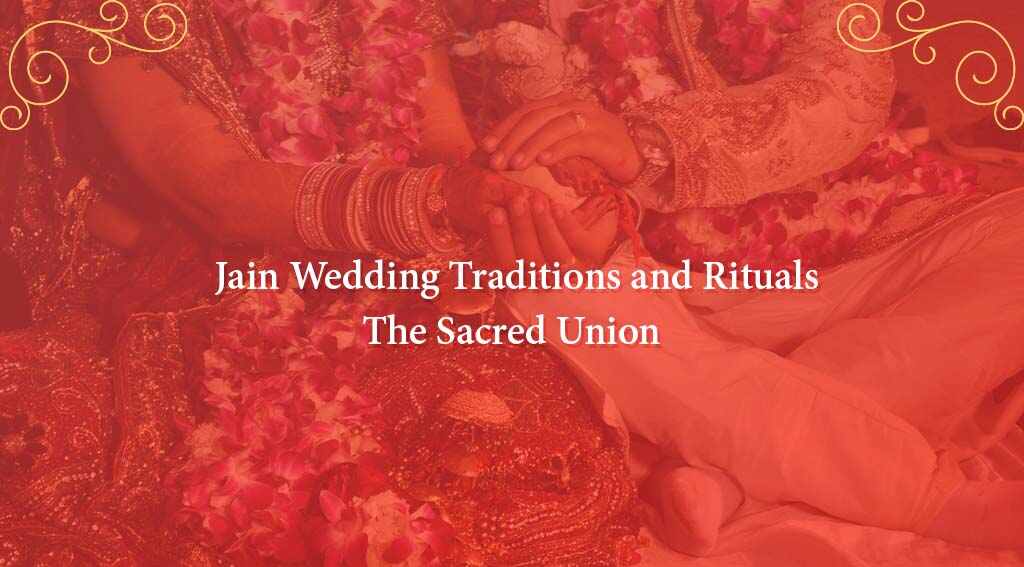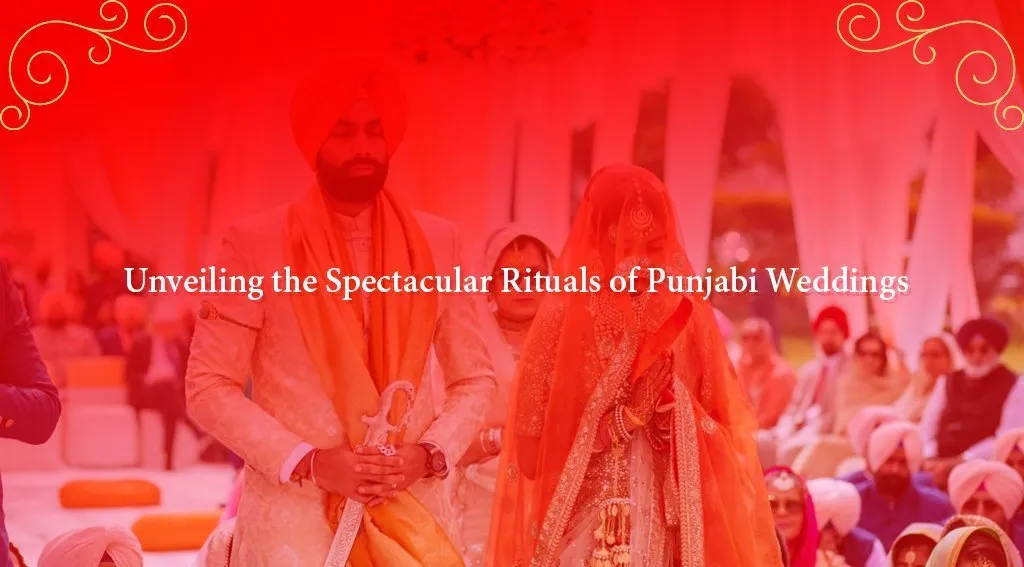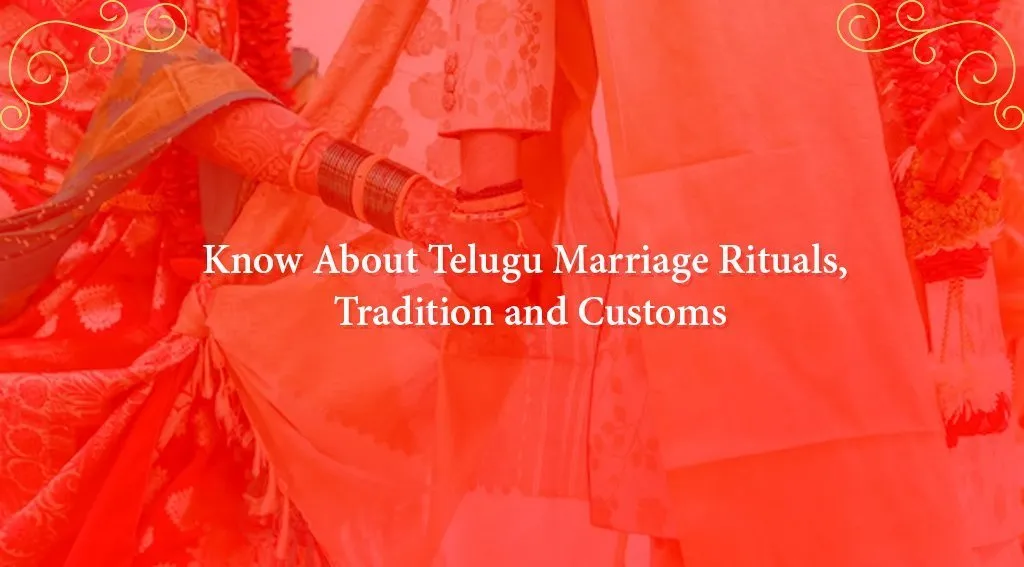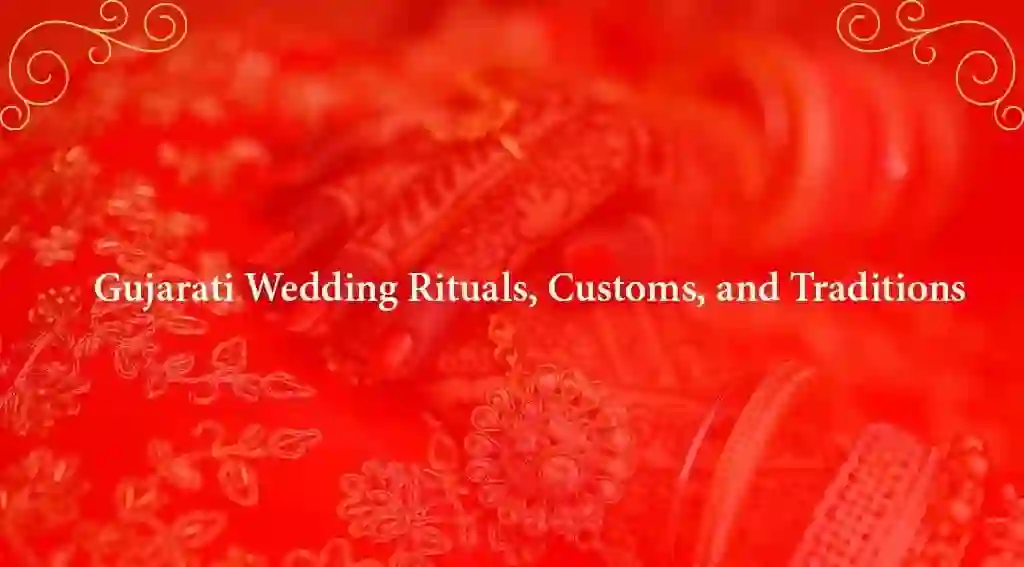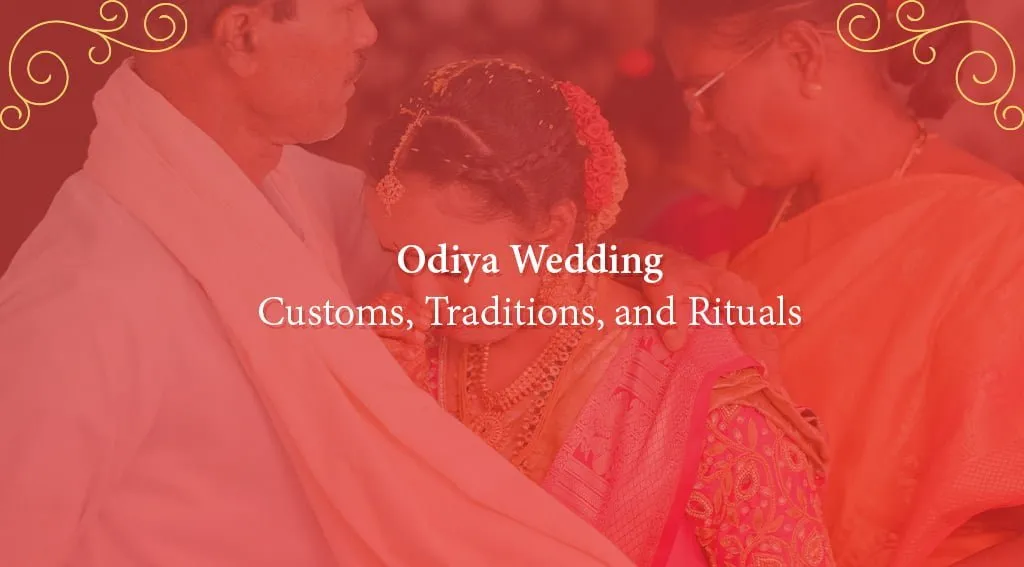A Jain wedding is a beautiful amalgamation of culture, traditions, and rituals that hold deep spiritual significance for the community. Rooted in ancient customs and guided by the principles of Jainism, these weddings are not just matrimonial ceremonies but sacred unions of souls.
Let’s delve into the rich tapestry of Jain Wedding Traditions and Rituals, and uncover the essence of this soulful journey.
Understanding Jain Wedding Traditions and Rituals
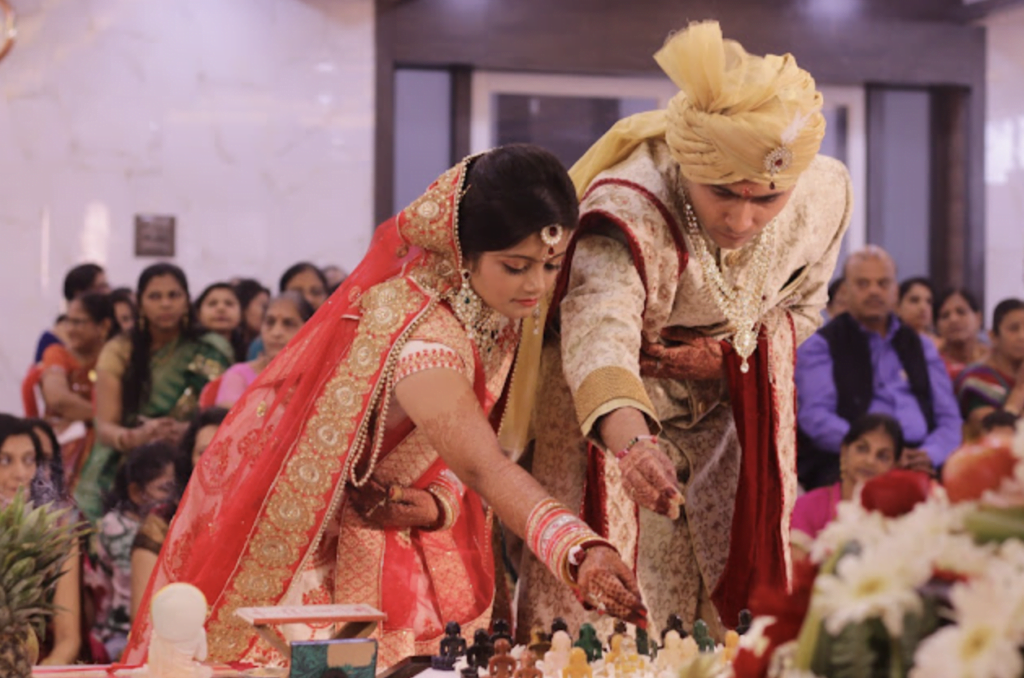
Before we embark on our journey into the world of Jain Wedding Traditions and Rituals, let’s briefly explore Jainism and how it influences these sacred unions.
1. What is Jainism?
Jainism is an ancient Indian religion that emphasizes non-violence (ahimsa), compassion, and self-discipline. Founded by Lord Mahavira in the 6th century BCE, Jainism teaches the path of liberation from the cycle of birth and death through spiritual enlightenment.
2. How does Jainism shape Jain Weddings?
Jain Wedding Traditions and Rituals are deeply influenced by Jain teachings and philosophy. The rituals and traditions are designed to reinforce the values of non-possessiveness, simplicity, and purity. It’s a celebration that unites not only two individuals but also their souls on a path of righteousness and spiritual growth.
Also Read | 25 Most Fun Bride Bachelor Party Ideas in India
Pre-Wedding Rituals: Laying the Foundation
Jain Wedding Rituals are a cascade of vibrant pre-wedding rituals that lay the foundation of harmony and happiness for the couple.
1. Lagana Lekhan: The Formal Engagement
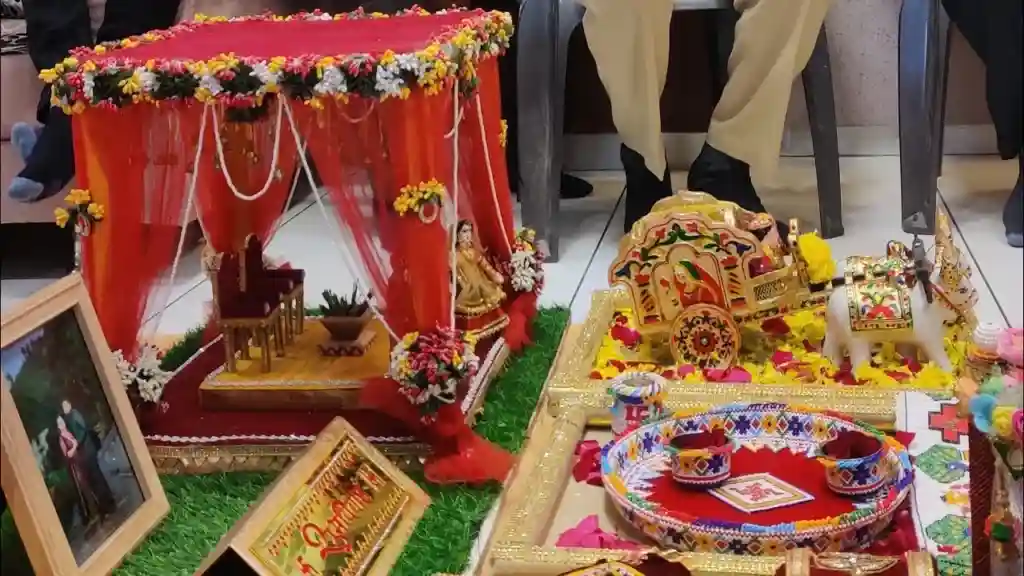
Lagana Lekhan is the formal engagement ceremony where the elders from both families come together to finalize the wedding date and perform a small puja seeking the blessings of Lord Mahavira.
2. Vagdana: The Marriage Announcement
Vagdana is the announcement of the wedding to the community and extended family. It’s a joyous occasion where relatives and friends are invited, and the couple seeks blessings.
Also Read | Wedding Jewellery That Completes Every Tamil Girl’s Bridal Look
3. Lagna Patrika Vachan: Reading the Wedding Invitation
Lagna Patrika Vachan involves reading the wedding invitation in the presence of a Jain monk or priest. The ceremony seeks the blessings of the divine for a successful and harmonious wedding.
4. Khol Barana and Tikka

As a Shagun, the groom’s family traditionally presents a silver plate with the auspicious coconut and some cash which is a kind of important Jain Wedding Traditions.
While this is referred to as the Khol Barana, the practice of the bride’s family visiting the groom’s home with presents is referred to as the tikka or Tilak ceremony.
5. Tilak
A Jain Wedding Rituals is officially finished with a tilak. The family of the bride pays a visit to the groom’s family, and presents and sweets are given, along with the groom’s tilak ritual.
6. Mehndi
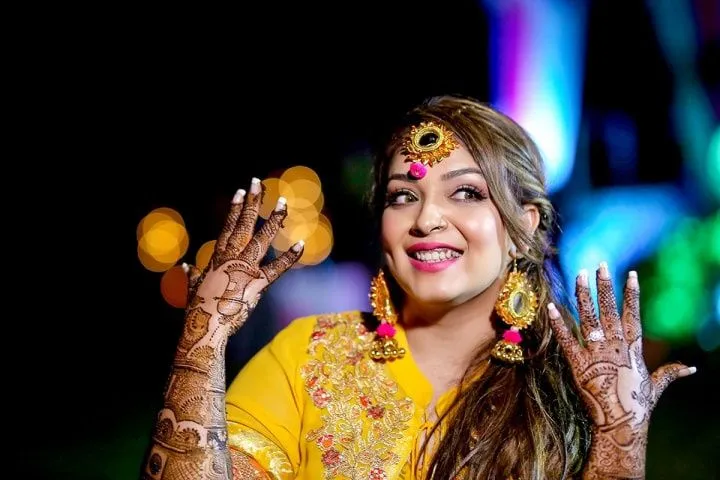
The mehndi ritual here is similar to that of most Indian celebrations. Females of family and friends come together to apply mehendi on the bride’s hand.
7. Bana Betai
The Bana Betai is the Haldi ritual in a Jain marriage. Instead of turmeric paste, the bride and groom are given a small amount of chickpea paste or besan, followed by a traditional bath.
Also Read | 11 Captivating Wedding Traditions from Around the World
The Grand Wedding Day: A Union of Souls
The wedding day is the culmination of all the preparations and anticipation, where the couple takes sacred vows to embark on their journey together.
1. Baraat Swagat: Welcoming the Groom’s Procession
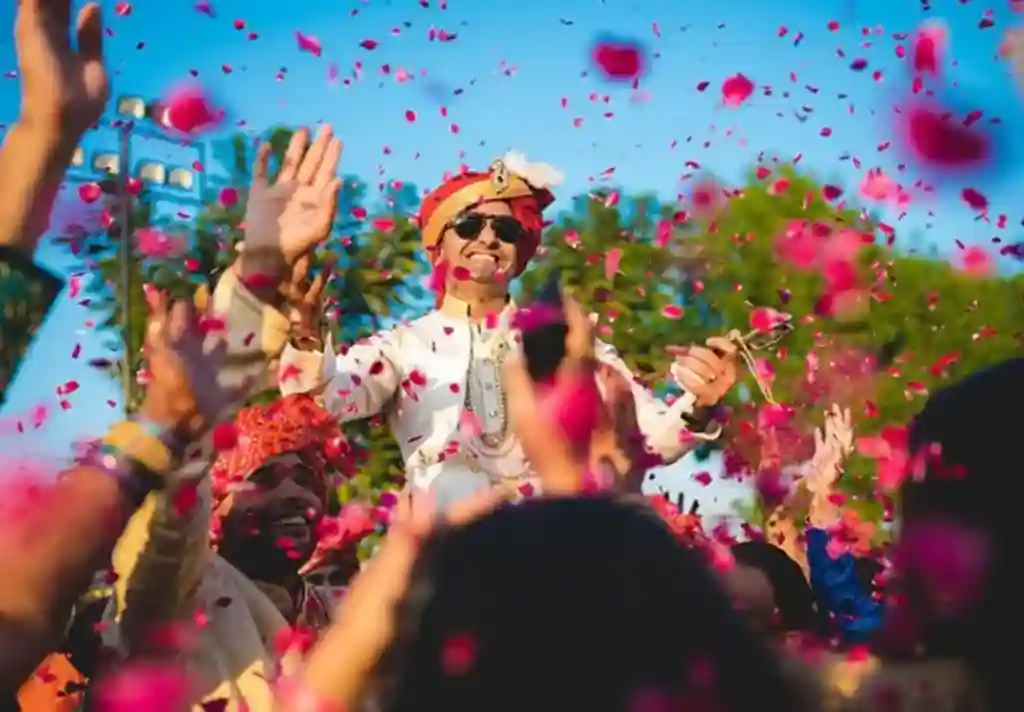
The groom’s procession, known as Baraat, is a grand affair. The bride’s family welcomes the groom’s family with great pomp and show, accompanied by traditional music and dance.
2. Varmala: The Sacred Garland Exchange
Varmala is a heartwarming ritual where the bride and groom exchange floral garlands, signifying their acceptance of each other as life partners.
3. Granthi-Bandhan: Tying the Sacred Knot
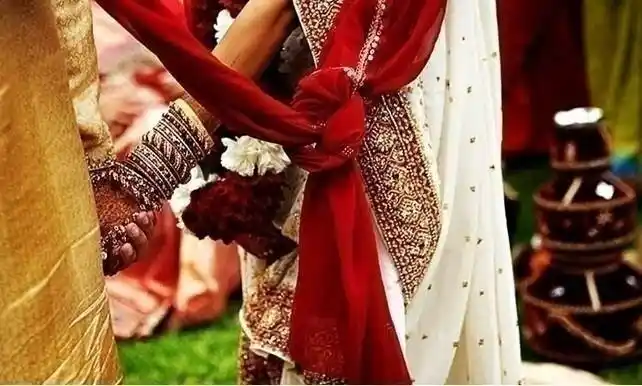
Granthi-Bandhan is a crucial Jain Wedding tradition. Here, the two souls are bound together by tying a sacred knot. This symbolizes their eternal bond and commitment to each other.
4. Mangal Pheras: Circling the Sacred Fire
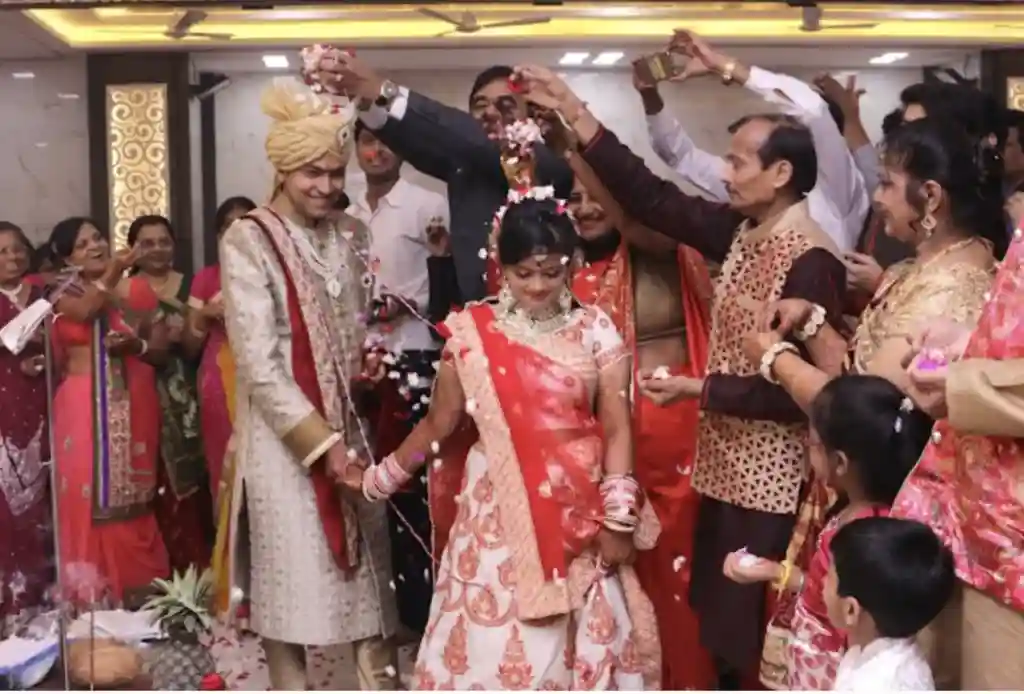
In Mangal Pheras, the couple takes four rounds around the sacred fire, each symbolizing a vow to uphold the values of dharma, artha, kama, and moksha in their married life.
5. Saptapadi: Seven Steps to Eternal Togetherness
Saptapadi is the ritual where the couple takes seven steps together, each step accompanied by sacred vows and promises. It signifies their journey towards eternal togetherness.
Also Read | Unlocking the Secrets to Lasting Love: Pre-Marital Counseling with Matrimilan
6. Bidaai
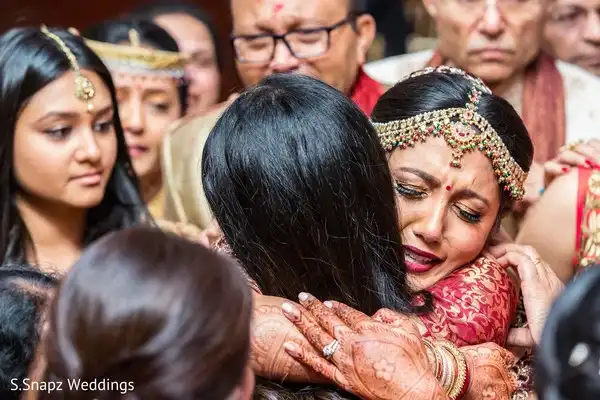
The Bidaai ritual refers to family members bidding farewell to their daughter. We lack the ability to express our emotions in words.
Post-Wedding Traditions: A Blissful Life
1. Sva Graha Aagamana: The Bride’s Arrival at the Groom’s House
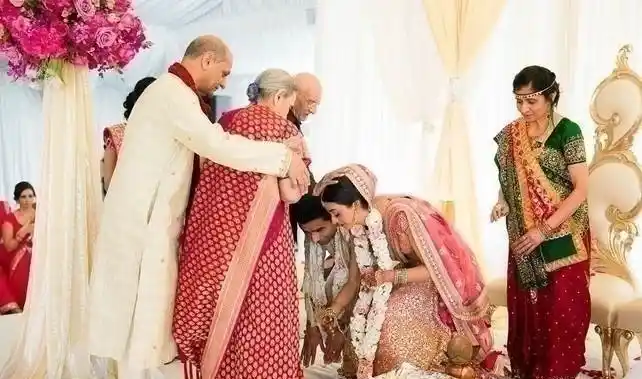
Sva Graha Aagamana is the ceremonial arrival of the bride at the groom’s house. The groom’s family welcomes her with open arms and showers her with blessings and gifts.
2. Jina Grahe Dhan Arpana: Offering Charity to the Less Fortunate
Jina Grahe Dhan Arpana is a noble tradition where the couple offers donations to the less fortunate, recognizing the importance of selfless giving is a crucial Jain Wedding tradition.
3. Samuhik Bhakti: Group Prayer and Seekings Blessings
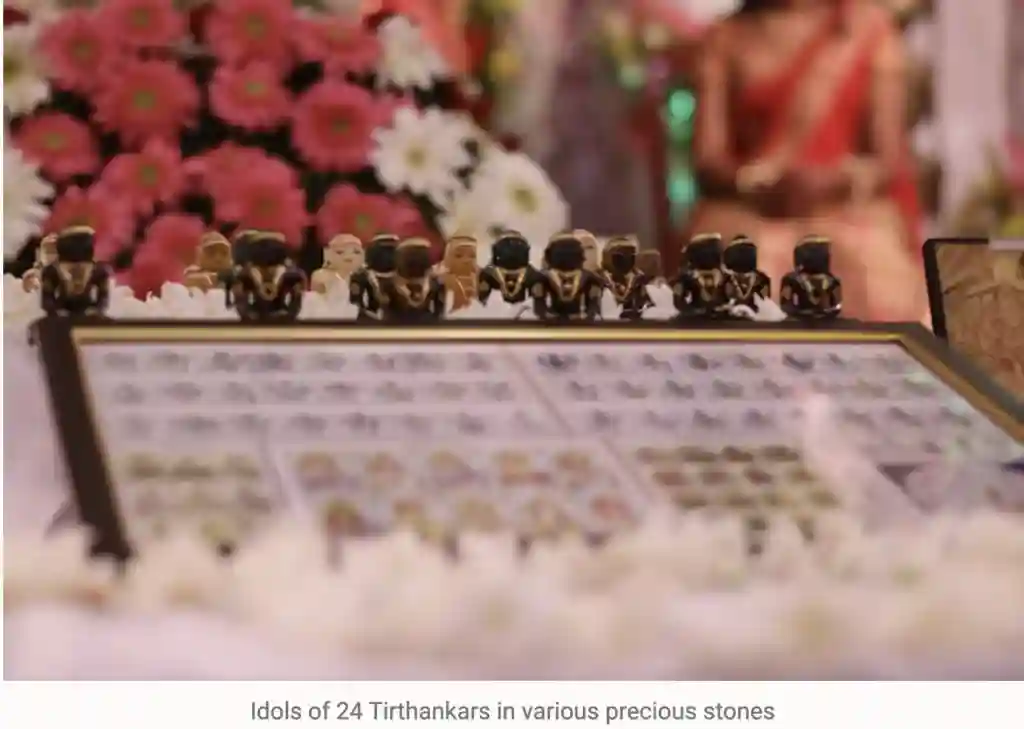
Samuhik Bhakti is a beautiful Jain tradition where the newly married couple, along with their families, come together for group prayers and seek blessings for a prosperous married life.
4. Gruh Pravesh: Welcoming the Bride into Her New Home
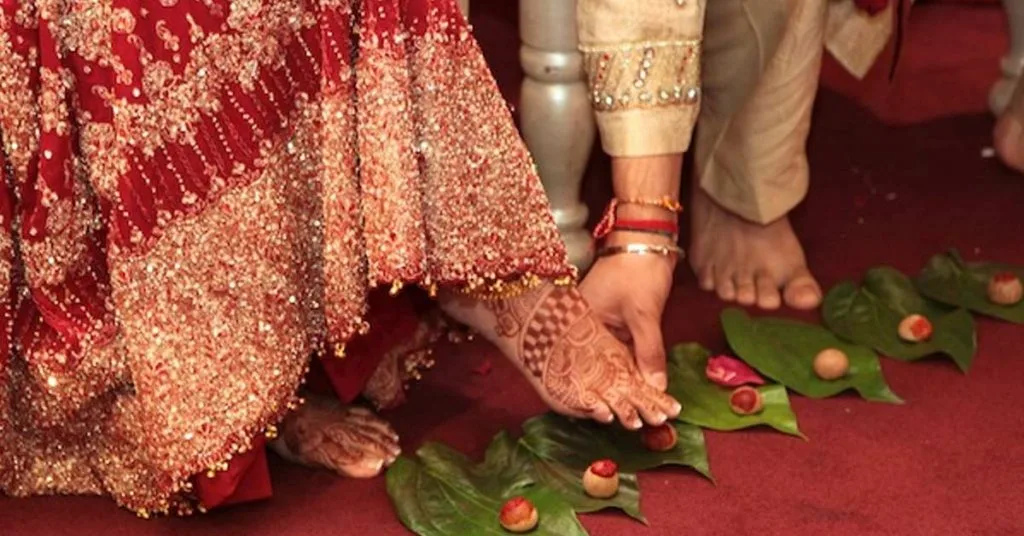
The bride is welcomed into her new home at the Gruh Pravesh ritual. She is greeted with affection and tenderness, signifying that she is accepted as a member of the family.
Conclusion
A Jain wedding is not just a union of two individuals; it is a sacred journey of love, spirituality, and lifelong commitment. Rooted in the rich culture, traditions, and rituals of Jainism, these weddings celebrate the harmony between the physical and the spiritual realms. With every ceremony and vow, the couple embraces the teachings of Lord Mahavira and embarks on a blissful path together.
How long does a traditional Jain wedding ceremony typically last?
A traditional Jain wedding ceremony usually lasts for about 2-3 hours, depending on the customs followed by the families involved.
Is there a significance of the number of pheras (circles) taken during the wedding ceremony?
Yes, the number of pheras varies across different Jain sects. Some sects follow four pheras, while others may perform seven or more, symbolizing different aspects of married life.
What role does astrology play in Jain weddings?
Astrology plays a significant role in determining auspicious dates and times for various wedding ceremonies. Jain priests or astrologers are consulted to ensure the alignment of cosmic energies.
Are there any specific dress codes for Jain wedding ceremonies?
Jain weddings often have a dress code, with the bride wearing a traditional red or maroon lehenga and the groom donning a sherwani or dhoti-kurta ensemble.

